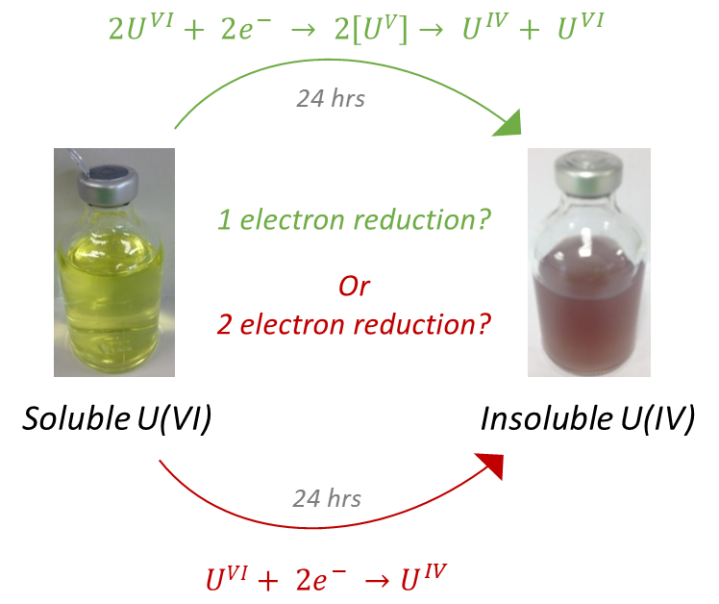There is a legacy of radioactively contaminated land across the world related to various activities associated with the nuclear fuel cycle (e.g. U mining). In these systems radionuclides can be present in groundwaters at elevated concentrations. Of these, uranium is a contaminant and understanding its environmental biogeochemistry is key to controlling its fate in contaminated land.
In order to respire, we, as humans, couple the oxidation of a carbon source (that sandwich you just had for lunch) with the reduction of oxygen which we breath in. In a similar fashion, certain microbes can gain energy by coupling the oxidation of carbon sources with the reduction of metals (e.g. iron). In the case of uranium, microbial metabolisms can reduce soluble U(VI) to relatively insoluble U(IV) thus potentially immobilising the contaminant. Whilst we have known about this process for almost 30 years, the mechanism(s) underpinning this redox transformation are still not fully understood. Although it is generally believed that the bioreduction of U(VI) by metal-reducing bacteria proceeds via a pentavalent U(V) intermediate, and that U(V) will disproportionate to eventually form a sink of poorly soluble U(IV) biominerals, until recently there was no definitive evidence.

My recent publication, Multiple Line of Evidence Identify U(V) as a Key Intermediate During U(VI) Reduction by Shewanella oneidensis MR1, sets out to observe the elusive U(V) intermediate during the microbial reduction of U(VI). Over 3 years, I have worked across Europe looking to use the best, state-of-the-art techniques and collaborated with other world-renowned groups. This has included trips to the ESRF in Grenoble, France; CAT-ACT at Karlsruhe Light Source, Germany. In my work, I employed a multi-technique approach, which combined Inductively Coupled Plasma Mass-Spectrometry (ICPMS), luminescence spectroscopy, U L3-edge X-ray absorption spectroscopy and U M4-edge High Resolution X-ray Absorption Near-Edge Structure (HR-XANES); the latter of which being the first example of this type of analysis published using a microbial system. This powerful combination of analytical techniques not only identified a U(V) intermediate during the bioreduction of U(VI) by S. oneidensis MR1, but it also found a prolonged and unexpected U(V) stability throughout the experiment, which poses new questions and demands further exploration. This not only demonstrates the upper-limits of novel techniques but also widens the understood boundaries of stability for U(V) under environmentally relevant conditions.
Written by Gianni F. Vettese
Check out the full paper here: https://doi.org/10.1021/acs.est.9b05285
Reference: Vettese G. F., Morris K., Natrajan L.S., Shaw S., Vitova T., Galanzew J., Jones D. L. and Lloyd J.R.. Environ. Sci. Technol. 2020.

